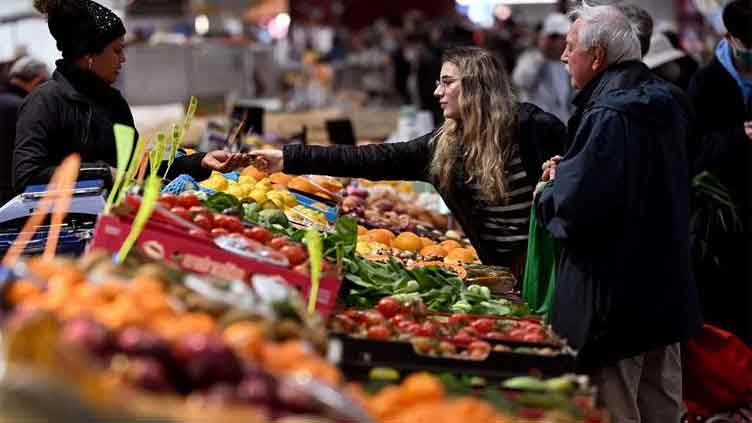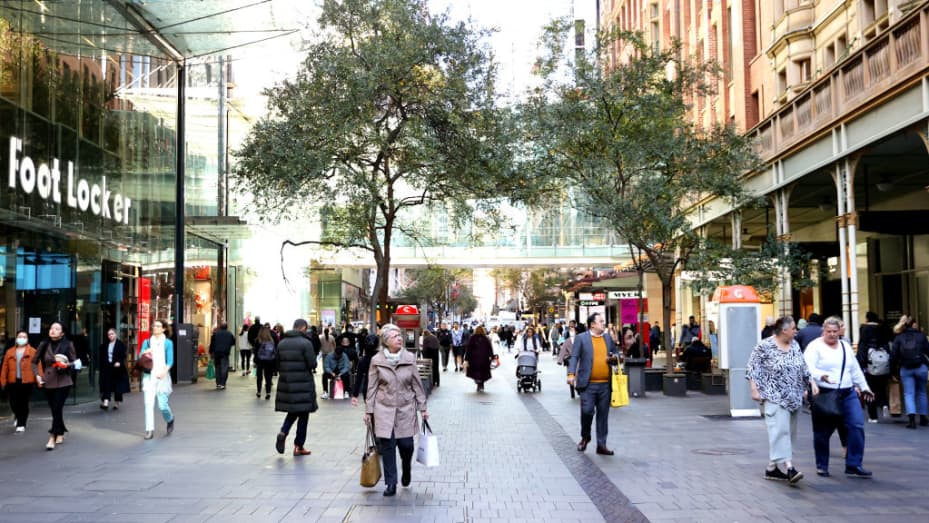Australia, inflation has reached a 32-year high.

Inflation in Australia is at record highs as a result of the COVID-19 epidemic, Russia’s invasion of Ukraine, and robust consumer demand.
Australia’s inflation rate reached a record high of 7.8% from January through December, according to the ABS, while quarterly inflation increased by 1.9%.The 7.8% result was in keeping with Treasury predictions that inflation would peak at roughly 8% by the end of 2022, but it was slightly higher than many experts’ expectations of around 7.5%.
According to the ABS numbers issued on January 25, the cost of new homes, which increased by 17.8%, domestic holidays, travel, and lodging, which increased by 19.8%, and fuel expenses, which increased by 13.2%, were the main drivers of annual inflation for the year to December. According to figures released by the ABS in October, Australia’s inflation rate increased to 7.3% yearly in the third quarter of 2017.The RBA raised interest rates eight times in a row in 2022, like many other central banks across the world. It aims for inflation of between 2% and 3%.
To provide economists and lawmakers with the most recent statistics on the state of inflation in the economy and the impact of rising interest rates, the ABS started publishing monthly data on inflation on September 29, 2023. Due to the fact that these new monthly data updates only reflect inflation on up to 70% of goods and services, the quarterly CPI will continue to be Australia’s primary indicator of inflation. The Australian Bureau of Statistics stated, “It should be noted that unlike the quarterly CPI which is only altered in rare situations, the monthly CPI indicator may be frequently subject to adjustment.”
The RBA has kept up its aggressive rate hike streak despite the high levels of inflation. RBA Governor Philip Lowe stated that “a further increase in inflation is projected over the months ahead, with inflation currently forecast to peak at roughly 8% later this year” in his statement on monetary policy. Next year, he said, “inflation is therefore anticipated to drop due to the ongoing settlement of global supply-side difficulties, recent reductions in some commodity prices, and slower increase in demand.”
The most recent apology from Lowe read: “I’m sorry that people listened to what we’ve said and acted on it, and now find them in a position they don’t want to find themselves in.” Prior to this, Lowe had predicted that interest rates “would not certainly rise until 2024,” at which time many individuals would take out sizable mortgages. In his first budget, Treasurer Jim Chalmer made an effort to strike a balance between reducing inflation and cost of living assistance. Inflation was described by Chalmers as the “greatest problem in the Australian economy” following the RBA’s most recent rate increase.
Why Is Inflation in Australia So High?
Inflation in Australia is at record highs as a result of the COVID-19 epidemic, Russia’s invasion of Ukraine, and robust consumer demand. Australia’s inflation rate reached a record high of 7.8% from January through December, according to the ABS, while quarterly inflation increased by 1.9%.
The 7.8% result was in keeping with Treasury predictions that inflation would peak at roughly 8% by the end of 2022, but it was slightly higher than many experts’ expectations of around 7.5%. According to the ABS numbers issued on January 25, the cost of new homes, which increased by 17.8%, domestic holidays, travel, and lodging, which increased by 19.8%, and fuel expenses, which increased by 13.2%, were the main drivers of annual inflation for the year to December.
According to figures released by the ABS in October, Australia’s inflation rate increased to 7.3% yearly in the third quarter of 2017. The RBA raised interest rates eight times in a row in 2022, like many other central banks across the world. It aims for inflation of between 2% and 3%.
To provide economists and lawmakers with the most recent statistics on the state of inflation in the economy and the impact of rising interest rates, the ABS started publishing monthly data on inflation on September 29, 2023. Due to the fact that these new monthly data updates only reflect inflation on up to 70% of goods and services, the quarterly CPI will continue to be Australia’s primary indicator of inflation. The Australian Bureau of Statistics stated, “It should be noted that unlike the quarterly CPI which is only altered in rare situations, the monthly CPI indicator may be frequently subject to adjustment.”
The RBA has kept up its aggressive rate hike streak despite the high levels of inflation. RBA Governor Philip Lowe stated that “a further increase in inflation is projected over the months ahead, with inflation currently forecast to peak at roughly 8% later this year” in his statement on monetary policy. Next year, he said, “inflation is therefore anticipated to drop due to the ongoing settlement of global supply-side difficulties, recent reductions in some commodity prices, and slower increase in demand.”
The most recent apology from Lowe read: “I’m sorry that people listened to what we’ve said and acted on it, and now find them in a position they don’t want to find themselves in.” Prior to this, Lowe had predicted that interest rates “would not certainly rise until 2024,” at which time many individuals would take out sizable mortgages.
Australia has significant inflation as a result of several things. Because the government provided long-term emergency stimulus programmes like the JobKeeper payments and HomeBuilder subsidies, the economic recovery from the worldwide crisis brought on by COVID-19 lockdowns has been greater than anticipated. Saul Eslake, a economist, claims that because prices were primarily moving down in the 20 years prior to the pandemic, inflationary shocks are already being felt sharply.
This resulted from the manufacture of “large ticket items”—also known as consumer durable goods—moving to developing countries, where costs are cheaper. Due to the rarity with which these expensive products are purchased, the majority of people were unaware until the prices skyrocketed. There was a sharp increase in demand for goods like laptops and home exercise equipment when lockdowns were implemented.
Saul Eslake, a economist, claims that because prices were primarily moving down in the 20 years prior to the pandemic, inflationary shocks are already being felt sharply. This resulted from the manufacture of “large ticket items”—also known as consumer durable goods—moving to developing countries, where costs are cheaper. Due to the rarity with which these expensive products are purchased, the majority of people were unaware until the prices skyrocketed.
There was a sharp increase in demand for goods like laptops and home exercise equipment when lockdowns were implemented. A lack of supplies resulted from industries closing almost immediately due to the lockdowns at the same time. The 400% increase in shipping expenses was caused by the retirement of several ships. The invasion of Ukraine by Russia has increased the upward pressure on oil, gas, and numerous food item prices.
The Effects of Inflation on Australians in Daily Life
Customers have been burdened with the greater company expenses, making regular Australians considerably worse off. The issue is made worse by stagnant earnings, which have been marginally declining or staying the same for the previous five years. Australians in general are seeing drops in their level of living in terms of material goods. They sometimes have to make tough decisions about their financial decisions, according to Eslake. According to Coates, the ordinary Australian’s living standards have dropped more recently than they did from 2007 to 2009’s Global Financial Crisis.
“Real earnings did not decline as drastically as they have in recent years. Real salaries decreased 2.7% from March of last year. Some folks were able to save a lot of money since they were unable to purchase anything during lockdowns. Others had their funds and means of support destroyed. Like other central banks across the world, Australia’s Reserve Bank increased interest rates in response to inflation. This indicates that a larger share of revenues is being used to pay mortgage interest.
The majority of Australians have variable-rate mortgages, so they reduce discretionary spending and tighten their budgets to combat inflation, according to Coates. Because higher interest rates will slow the economy, the Central Bank is working to achieve a better balance between the supply and demand of goods and services. The marginal borrowers, who Coates believes make up around one-third of new loans, will be the ones to feel the effects of the interest rate increases the most.
Global inflation is predicted by the International Monetary Fund (IMF) to reach 8.3% by year’s end, which increases the likelihood of recessions in the US and the European Union. “Those countries’ central banks are concerned and have tightened the clamps. To cool off inflation, they dramatically increased interest rates, according to Coates. Eslake is heartened by the fact that there is already some proof that US people do not anticipate inflation to be a constant part of life.
The possibility of an inflationary mindset becoming established, as it did in the 1970s and ’80s, is what most frightens the central bank, he claims. Companies will start raising prices in anticipation of cost rises if individuals and businesses see inflation as a way of life. It becomes a self-fulfilling prophesy as a result. In Australia, the Reserve Bank and the federal government both predict that inflation will reach a peak in the December quarter of 2022, reaching 7.75%. It is anticipated that inflation would begin to decline starting in 2019 and continue through 2024.
edited and proofread by nikita sharma




